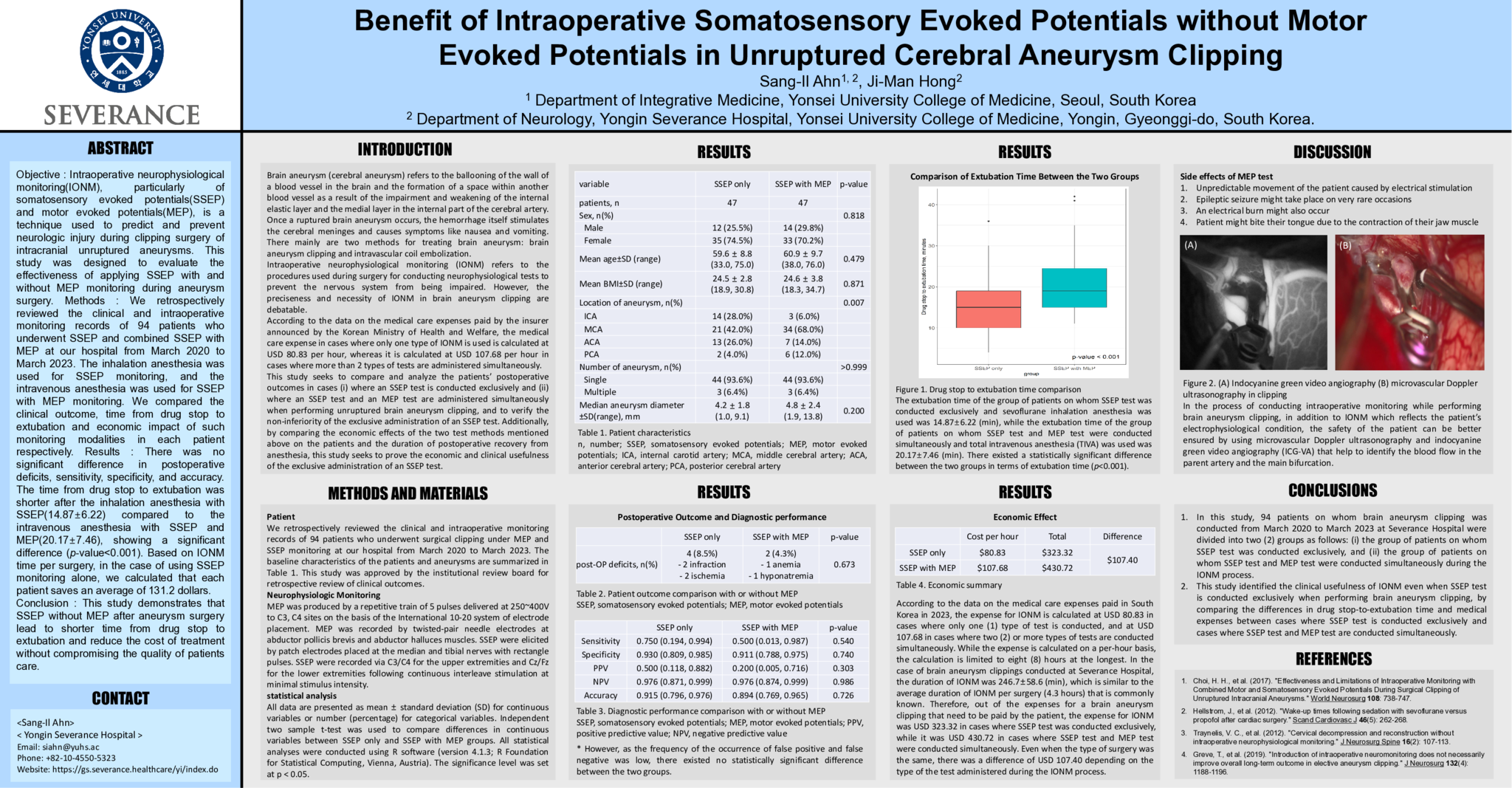Objective : Intraoperative neurophysiological monitoring(IONM), particularly of somatosensory evoked potentials(SSEP) and motor evoked potentials(MEP), is a technique used to predict and prevent neurologic injury during clipping surgery of intracranial unruptured aneurysms. This study was designed to evaluate the effectiveness of applying SSEP with and without MEP monitoring during aneurysm surgery. Methods : We retrospectively reviewed the clinical and intraoperative monitoring records of 94 patients who underwent SSEP and combined SSEP with MEP at our hospital from March 2020 to March 2023. The inhalation anesthesia was used for SSEP monitoring, and the intravenous anesthesia was used for SSEP with MEP monitoring. We compared the clinical outcome, time from drug stop to extubation and economic impact of such monitoring modalities in each patient respectively. Results : There was no significant difference in postoperative deficits, sensitivity, specificity, and accuracy. The time from drug stop to extubation was shorter after the inhalation anesthesia with SSEP(14.87±6.22) compared to the intravenous anesthesia with SSEP and MEP(20.17±7.46), showing a significant difference (p-value<0.001). Based on IONM time per surgery, in the case of using SSEP monitoring alone, we calculated that each patient saves an average of 131.2 dollars. Conclusion : This study demonstrates that SSEP without MEP after aneurysm surgery lead to shorter time from drug stop to extubation and reduce the cost of treatment without compromising the quality of patients care.
- 1 view




